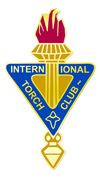
Meeting Minutes
Torch Club of the Fox Valley
08 September 2016
Atlas Coffee Mill & Café
Notes taken by: Jude Kuenn, secretary
Attendees: Karen Bachhuber, Jim Baumbach, Nancy Bodway, David Debbink, Marcia Debbink, Mary Flanagan, Paul Freiberg, Jean Hedges, Walt Hedges, Jean Jepson, Jude Kuenn, Cam Maurice, Mary Poulson, Richard Schoenbohm, Helen Thiel, Peter Thiel, Scott Valitchka, Donna Weis, Sofia Wilson
Guests: none
BUSINESS MEETING
Meeting called to order at 6:32pm.
- Guest Introductions: there were no guests.
- Karen was thanked for taking minutes from 5/12/16 meeting. They were accepted, motioned and approved.
- Treasurer’s report: 9/01/16 balance of $2,332.81 included $250 IATC reimbursement from June’s convention. Richard read Barbara’s report in her absence. It was accepted, motioned and approved.
- Old Business:
A. Paul recapped upcoming presentation schedule for the year, and reminded those with ‘TBD’ to let him know your topic. Book exchanges will be in October and April.
B. 2016 IATC Convention ‘Come Discover Columbus’ held June-23-26 will be recapped when Bill and Barbara are present. - A big ‘Thank you!’ was extended to Bill and Barbara for the excellent Summer Party, 8/11/16. The gardens were lovely and everyone enjoyed the evening.
- New Business:
A. Torch dues is due at October’s meeting. A current year’s regular due is $70 for first member of the household, and $45 for second in household. There was uncertainty to second household fee, so Richard offered to confirm price with Barbara and post.
B. Other new business: none. - Announcements:
A. On Jan’s behalf, Scott shared Bergstrom-Mahler Museum of Glass’ new exhibit opening 9/10/16 is “Bending Brilliance: Neon and Plasma Sculpture”. The exhibition of more than 40 light sculptures done with neon or plasma will include works from 13 artists from across the nation.
B. Mary Poulson announced 10/05/16 as first Noonhour Philosophers’ meeting. She will bring NHP speaker schedule to next month’s meeting.
Business segment adjourned at 6:48pm for dinner.
Walt Hedges presented “The History of Navigation”
Wayfinding encompasses all of the ways in which people orient themselves in physical space and navigate from place to place. Ancient cultures figured things out in their own time, but it is the victor who writes history.
In 400AD, St. Brendan left the shores of Ireland, mythical or not, may have traveled as far as Iceland and returned to Britain, where he died. How did he navigate his way? Arabs as desert travelers also knew how to navigate their landscape.
While said in 1492, Columbus sailed the ocean blue, the Vikings explored in today’s Boston harbor ~900AD, one Viking found eastern Canada in 850AD. North America was mapped 60 years before Columbus’ voyage.
The Ocean peoples: Micronesians, Melanesians, and Polynesians, spent 800 years traveling 16 million square miles of ocean, civilizing every island explored due to population pressures. ~500 AD Hawaii was settled by Polynesians while Europeans hadn’t even thought of ocean travel. How did these peoples travel? They watched birds’ migration, followed wind directions, noted wave patterns, looked at the curve of the earth and used the frigate bird. The frigate doesn’t exceed flying 90 miles from land (usually 40-50 miles), and cannot land on water. Taken on a voyage, the birds would be set loose. If they found no land, they returned to the boat. Different fish and water plants also were indicators of water wayfinding.
These cultures groomed special people as navigators. Brought up from birth for the role, male or female, they learned chants, songs, knew legends and set up charts. These were literally stellar navigators and knew which stars were over which island. Navigators had no ship duties other than finding/keeping a course. They worked 20 hours a day.
Wayfinders were not scientific. It was the Arabs who used science, creating true navigational methods to determine position, location, distance traveled, and course to a known destination.
It was ~1770 when Captain Cook met the Tahitians, that western people were exposed to Oceanic cultures.
With handmade examples, Walt shared some tools of navigation:
- Latitude hook or kamal - rectangular piece of wood measured to fit the distance of the star from the horizon, with a knotted string, held in place by user’s teeth
- One-dimensional disk with one or more needles and designated lines to determine direction
- Sun compass
- Icelandic spar stone – used polarized light and just a patch of blue sky
- Astrolabe - invented by the Greeks, ~200BC. Device was later refined more like an analog computer, ~1100AD
- Quadrant – an instrument used to measure angles up to 90 degrees
- Cross staff – moving one of the sighting vanes along the staff could measure between horizon and celestial body (1 degree = 60 miles)
- Backstaff – invented by John Davis to take sun readings
- Sextant – doubly reflected instrument used to measure the angle between two visible objects
- Dead-reckoning – using a board with holes, the process calculates one’s current position using a previously determined position
- Chip log – tool used to estimate the speed of a vessel
- Sundial (1500BC)
- Sand glass – turned every 30 minutes, required until 1839 on every British ship
- Nocturnal (1200AD) –used for telling time at night, determining latitude by the position on certain stars
- Chronometer (1759AD) – developed by John Harrison, could calculate longitude and latitude
- Radio navigation (1907) – was used in 1944 during World War II
- GPS (1992) - went public in 2000
- Compass (700AD) used by the Chinese, then Arabs, passed on to Spain (1100AD) – was long considered black magic and not trusted because the needle was affected by any magnetic pull